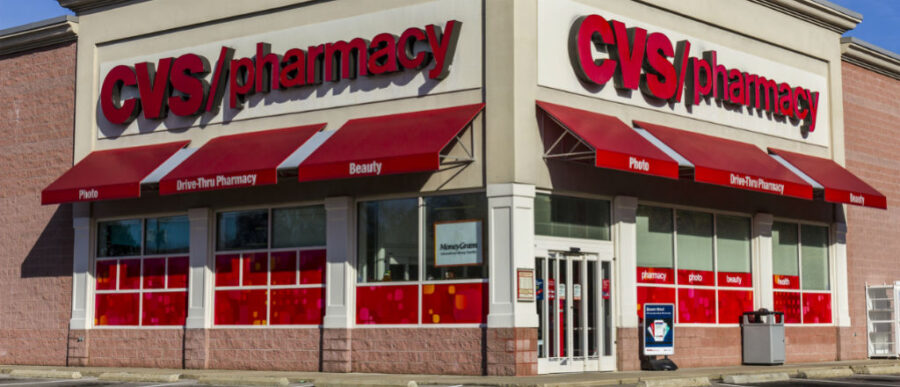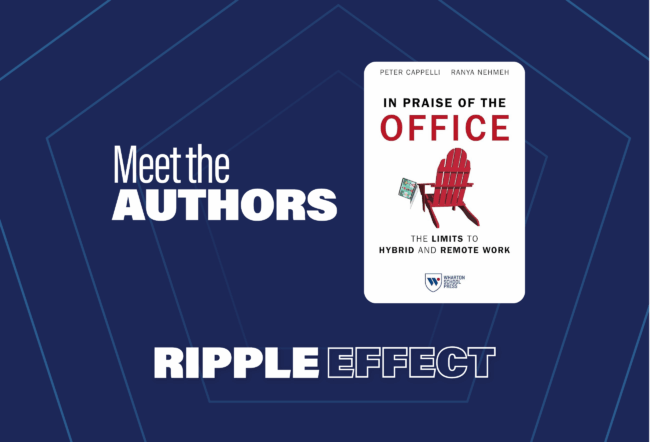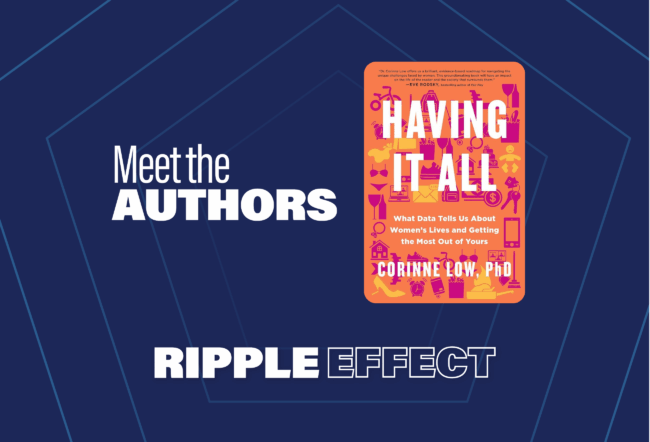If drugstore giant CVS succeeds at merging with health insurance company Aetna, it would create an unusual consolidation of a health care provider and a payer. The $69 billion deal ($77 billion including Aetna’s debt) is the latest move by CVS in its quest to become its customers’ “front door” for health care, as CEO Larry Merlo has said – but although there is a growing market for coordinated care, actually implementing such a system is complicated and would require the combined company to successfully upend traditional health care delivery formats. Moreover, the combined company may end up facing a formidable competitor — Amazon.
In a news release, CVS describes the cash-and-stock deal as being all about integrating the work of doctors, pharmacists and other health care professionals “to create a platform that is easier to use and less expensive for consumers.” CVS and Aetna have combined annual revenues of about $240 billion. By comparison, UnitedHealth, which is currently the largest health insurance company in the U.S., last month forecast its 2018 revenues at $225 billion.
Mark Pauly, Wharton professor of health care management, said the deal is unique. “It’s intended in part as a defensive measure because of a fear that Amazon will enter the pharmacy space and the pharmacy benefits management space potentially.” He noted that the deal is different from other vertical combinations “that put the nucleus of control either in a hospital system or in a subset of physicians in a community trying to organize a more coordinated care measure.”
Robert Field, professor of law and health management and policy at Drexel University, who is also a lecturer at Wharton, described the deal as “largely defensive.” He agreed with Pauly that “Amazon is … a wild card in all of this. They disrupt everything that they touch, and it’s hard to predict how they will disrupt.” As information-sharing becomes more and more important in health care, it makes sense for CVS and Aetna to team up. “The more levels that you are involved in, the more chance that you can be at the top level,” Field said.
Pauly and Field discussed the implications of the merger on the Knowledge at Wharton show on Wharton Business Radio on SiriusXM channel 111. (Listen to the podcast at the top of this page.)
Amazon as a Potential Competitor
Amazon’s growing customer base, information technology backbone, access to capital and a growing interest in physical locations have created the fear all around that it could potentially enter any sector it chooses to, and give others a run for their money. The latest alarms were sounded when Amazon bought the Whole Foods grocery chain for $13.7 billion in August. Various studies put Amazon’s Prime membership base at between 63 million and 69 million, and a Morgan Stanley survey found 40% of Prime members spend more than $1,000 a year on Amazon.
There have been clear signs that Amazon is planning to enter the health care industry. Over the past year, it has secured wholesale pharmacy licenses in many states, according to media reports. According to Field, the company’s extensive supply chains and information systems would be important assets if it chose to enter the sector.
“To borrow a line from the old movies, it’s so crazy it might just work.”–Mark Pauly
But CVS and Aetna will make for a powerful combination. CVS has more than 9,700 retail locations and 90 million pharmacy benefit plan members, while Aetna has nearly 45 million health care benefit customers. “They may be betting on that existing infrastructure,” said Field. “They don’t have to build anything.”
CVS also has 1,100 walk-in clinics, branded MinuteClinic, that are based on the model of coordinated care. Field noted that the MinuteClinics “have not yet become a cash cow,” but they bring consumers to the retail locations, who may then spend money on other goods.
The CVS-Aetna deal also marks a new-found friendship between two industry segments. “We’re seeing more and more the payer side and the provider side consolidating,” said Field. “Historically, they’ve had trouble working together; up through the 1990s, the health systems that set up their own insurance companies ended up failing at the insurance side and vice versa.”
The Rise of ‘Coordinated Care’
Pauly noted that similar to the CVS-Aetna model, other pharmacy chains like Walgreens are also pursuing coordinated care. He said driving that model is “the idea that particularly patients with chronic illnesses would do what they’re supposed to — they would take their medicines, they would exercise, they would change their diet, they would come in for tests and so forth on a schedule that experts think is good for them.”
Most coordinated care mechanisms thus far have been organized with a nucleus at either a hospital system or with a group of doctors, said Pauly. “The idea [behind the CVS-Aetna merger] is to have the drugstore be the place that would build on the MinuteClinics and the pharmacist,” he added. He noted that in many countries, pharmacists dispense advice to people on managing their health conditions. “[CVS] doesn’t want those people going to Amazon for their drugs, although CVS Caremark [its benefits management subsidiary] will mail-order your drugs, too. But they want to keep traffic in the store.”
Making the drug store “the nucleus of coordination” in the coordinated care model brings convenience to customers, but from the standpoint of an insurer, it could also reduce their health care spending, said Pauly. “So far, they haven’t been shown to have much of an ability, if any, to cut spending, although the shining vision of course is that eventually greater access to care will make people healthier and so they won’t need as much care,” he added. “To borrow a line from the old movies, it’s so crazy it might just work. Existing efforts to provide coordinated care with hospitals or doctors doing the coordination have been a dud in terms of their effectiveness.”
Field agreed with Pauly that the strategy driving the merger is to make “pharmacists the new hub.” He said that “if [the combined company] can find a way legally to share information between the insurer and the pharmacy benefit end, then they might be able to manage patient care better and be a more dominant player.” Furthermore, he noted that “pharmacists, after nurses, are the most trusted medical professionals.”
“Amazon is … a wild card in all of this. They disrupt everything that they touch, and it’s hard to predict how they will disrupt.”–Robert Field
More Consolidation Ahead
Field expected the CVS-Aetna merger to set off other consolidation deals within the industry. ”Everyone’s going to be running scared and trying to protect themselves as much as possible,” he said “Another possibility a little far out — Amazon could set up an insurance company.”
On Wednesday, UnitedHealth announced that it will buy the primary and urgent care services businesses of DaVita Inc. for $4.9 billion. That happens to be its second acquisition this year. In March, UnitedHealth bought Surgical Care Affiliates for $2.3 billion, bringing into its fold 205 surgical care centers in 30 states.
Meanwhile, the lines between insurance and non-insurance entities have also been blurring. Pauly pointed to the University of Pittsburgh Medical Center, which in 1990 set up its own health insurance plan and has since served as a model for other hospital-owned insurance plans.
Field didn’t expect the deal to face any regulatory obstacles, “because it is not a horizontal merger.” Pauly agreed with that reasoning. However, he said that “one not very well-grounded argument” could be that “vertical mergers [tend to] foreclose competition, and so that would be a reason not to approve it.”
Challenges and Questions
Some aspects of the merger don’t necessarily seem to add up at this juncture. Field wondered if a disconnect exists between the two parties on what they want from customers: While Aetna may want its customers to cut health care spending, CVS wants them to spend more at its stores. “How do they envision balancing that? Is the idea that they can manage chronic conditions and then Aetna will be able to lower premiums and get better market share from employers?” He noted that he has seen no signs of that strategy as yet.
“The question is really whether a pharmacist can get physicians to cooperate not only with the pharmacist, but also with each other in a more effective way.”–Mark Pauly
While the combined company will have “much bigger total revenues than the individual components, it won’t necessarily have more total customers,” said Pauly. “And it’s the number of customers that gives bargaining power to insurers.”
According to Field, one criticism of the merger, or at least a question, is that it doesn’t have physicians as part of the mix. “Maybe the idea is they don’t think they need physicians,” he said. “Maybe they can handle enough with physician extenders, nurse practitioners and pharmacists, [and the assumption is] that they can just buy physician services as needed and they don’t have to be part of the mix.”
More broadly, while the health care industry may agree on coordinated care as a model worth pursuing, it is still working on perfecting a model that works for customers “in terms of better quality, better outcomes and lower cost,” said Pauly. “The nub of the problem is that so far it’s been difficult to get individual physicians to work and play well together and to go along with the coordinated care mechanisms.” In the emerging scenario, the pharmacist will potentially have a new role, he said. “The question is really whether a pharmacist can get physicians to cooperate not only with the pharmacist, but also with each other in a more effective way.”
Ultimately, “it depends on what consumers value,” said Pauly. Currently, Aetna’s insurance customers could go to any pharmacy, but the merger may help it direct that business to CVS Health pharmacies, he noted. But with people who get their insurance through their employer, it is not clear if they may want to sign up for “this new combination,” he added. “It depends on how much you feel about potentially greater efficiency from it, relative to not being able to patronize your local neighborhood pharmacy.”
All said, Pauly wants the deal to go ahead. ”I’d like to see them give it a shot, because you never want to underestimate bandwagon effects.”



